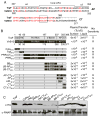Use of chimeric type IV secretion systems to define contributions of outer membrane subassemblies for contact-dependent translocation
- PMID: 28452085
- PMCID: PMC5518639
- DOI: 10.1111/mmi.13700
Use of chimeric type IV secretion systems to define contributions of outer membrane subassemblies for contact-dependent translocation
Abstract
Recent studies have shown that conjugation systems of Gram-negative bacteria are composed of distinct inner and outer membrane core complexes (IMCs and OMCCs, respectively). Here, we characterized the OMCC by focusing first on a cap domain that forms a channel across the outer membrane. Strikingly, the OMCC caps of the Escherichia coli pKM101 Tra and Agrobacterium tumefaciens VirB/VirD4 systems are completely dispensable for substrate transfer, but required for formation of conjugative pili. The pKM101 OMCC cap and extended pilus also are dispensable for activation of a Pseudomonas aeruginosa type VI secretion system (T6SS). Chimeric conjugation systems composed of the IMCpKM101 joined to OMCCs from the A. tumefaciens VirB/VirD4, E. coli R388 Trw, and Bordetella pertussis Ptl systems support conjugative DNA transfer in E. coli and trigger P. aeruginosa T6SS killing, but not pilus production. The A. tumefaciens VirB/VirD4 OMCC, solved by transmission electron microscopy, adopts a cage structure similar to the pKM101 OMCC. The findings establish that OMCCs are highly structurally and functionally conserved - but also intrinsically conformationally flexible - scaffolds for translocation channels. Furthermore, the OMCC cap and a pilus tip protein coregulate pilus extension but are not required for channel assembly or function.
© 2017 John Wiley & Sons Ltd.
Figures







Similar articles
-
Architecture of the outer-membrane core complex from a conjugative type IV secretion system.Nat Commun. 2021 Nov 25;12(1):6834. doi: 10.1038/s41467-021-27178-8. Nat Commun. 2021. PMID: 34824240 Free PMC article.
-
In Situ Visualization of the pKM101-Encoded Type IV Secretion System Reveals a Highly Symmetric ATPase Energy Center.mBio. 2021 Oct 26;12(5):e0246521. doi: 10.1128/mBio.02465-21. Epub 2021 Oct 12. mBio. 2021. PMID: 34634937 Free PMC article.
-
An Agrobacterium VirB10 mutation conferring a type IV secretion system gating defect.J Bacteriol. 2011 May;193(10):2566-74. doi: 10.1128/JB.00038-11. Epub 2011 Mar 18. J Bacteriol. 2011. PMID: 21421757 Free PMC article.
-
Promiscuous DNA transfer system of Agrobacterium tumefaciens: role of the virB operon in sex pilus assembly and synthesis.Mol Microbiol. 1994 Apr;12(1):17-22. doi: 10.1111/j.1365-2958.1994.tb00990.x. Mol Microbiol. 1994. PMID: 7914664 Review.
-
The Agrobacterium VirB/VirD4 T4SS: Mechanism and Architecture Defined Through In Vivo Mutagenesis and Chimeric Systems.Curr Top Microbiol Immunol. 2018;418:233-260. doi: 10.1007/82_2018_94. Curr Top Microbiol Immunol. 2018. PMID: 29808338 Free PMC article. Review.
Cited by
-
Architecture of the outer-membrane core complex from a conjugative type IV secretion system.Nat Commun. 2021 Nov 25;12(1):6834. doi: 10.1038/s41467-021-27178-8. Nat Commun. 2021. PMID: 34824240 Free PMC article.
-
Molecular architecture of bacterial type IV secretion systems.PLoS Pathog. 2022 Aug 11;18(8):e1010720. doi: 10.1371/journal.ppat.1010720. eCollection 2022 Aug. PLoS Pathog. 2022. PMID: 35951533 Free PMC article. Review.
-
Biological Diversity and Evolution of Type IV Secretion Systems.Curr Top Microbiol Immunol. 2017;413:1-30. doi: 10.1007/978-3-319-75241-9_1. Curr Top Microbiol Immunol. 2017. PMID: 29536353 Free PMC article.
-
Genomic diversity of mcr-carrying plasmids and the role of type IV secretion systems in IncI2 plasmids conjugation.Commun Biol. 2025 Mar 1;8(1):342. doi: 10.1038/s42003-025-07748-y. Commun Biol. 2025. PMID: 40025288 Free PMC article.
-
Electrostatic Switching Controls Channel Dynamics of the Sensor Protein VirB10 in A. tumefaciens Type IV Secretion System.ACS Omega. 2020 Feb 4;5(7):3271-3281. doi: 10.1021/acsomega.9b03313. eCollection 2020 Feb 25. ACS Omega. 2020. PMID: 32118142 Free PMC article.
References
-
- Aly KA, Baron C. The VirB5 protein localizes to the T-pilus tips in Agrobacterium tumefaciens. Microbiology. 2007;153:3766–3775. - PubMed
-
- Ames BN, McCann J, Yamasaki E. Methods for detecting carcinogens and mutagens with the Salmonella/mammalian-microsome mutagenicity test. Mutat Res. 1975;31:347–364. - PubMed
-
- Arutyunov D, Frost LS. F conjugation: back to the beginning. Plasmid. 2013;70:18–32. - PubMed
-
- Babic A, Lindner AB, Vulic M, Stewart EJ, Radman M. Direct visualization of horizontal gene transfer. Science. 2008;319:1533–1536. - PubMed
MeSH terms
Substances
Grants and funding
LinkOut - more resources
Full Text Sources
Other Literature Sources
Miscellaneous

